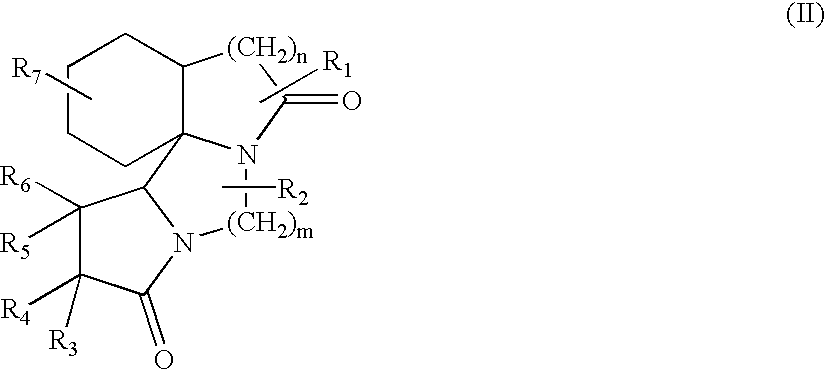Methods for restoring cognitive function following systemic stress
a systemic stress and cognitive function technology, applied in the field of cognitive function restoration following systemic stress, can solve the problems of affecting the quality of life of patients, memory loss, and difficulty in prescribing benzodiazepine, and achieve the effects of inhibiting the learning and memory effect, increasing the excitatory synaptic potential, and increasing the synaptic strength
- Summary
- Abstract
- Description
- Claims
- Application Information
AI Technical Summary
Benefits of technology
Problems solved by technology
Method used
Image
Examples
example 2
[0213] The efficacy of 10 mg of compound 2 administered orally t.i.d. was investigated in a four-week open-label Phase II clinical trial at two centers. A total of 20 patients with cognitive disturbances secondary to cerebrovascular and traumatic brain injury were orally administered compound 2 during a Phase II clinical trial at a dose of 10 mg t.i.d. for a period of four weeks. At study entry, patients fulfilled specific criteria for mild cognitive disturbance.
[0214] Improvement on several tests, including the Mini Mental State Evaluation (MMSE) (Folstein et al., Psychiatric Research, 12, 189-198 (1975)), the Overall Clinical Impression Scale (OCS), which is a system developed by the National Institute of Mental Health: 12-CGI Clinical Global Impression ECDEU Assessment Manual for Psychopharmacology, E. Guyo, ed., Rockville Md., (217-222) (1976), and the Cognitive Capacity Screening Exam (CCSE) (Jacobs et al., Annals of Internal Medicine, 86, 40-46 (1977).
[0215] Results in the stu...
PUM
| Property | Measurement | Unit |
|---|---|---|
| atomic number | aaaaa | aaaaa |
| concentrations | aaaaa | aaaaa |
| systemic stress | aaaaa | aaaaa |
Abstract
Description
Claims
Application Information
 Login to View More
Login to View More - R&D
- Intellectual Property
- Life Sciences
- Materials
- Tech Scout
- Unparalleled Data Quality
- Higher Quality Content
- 60% Fewer Hallucinations
Browse by: Latest US Patents, China's latest patents, Technical Efficacy Thesaurus, Application Domain, Technology Topic, Popular Technical Reports.
© 2025 PatSnap. All rights reserved.Legal|Privacy policy|Modern Slavery Act Transparency Statement|Sitemap|About US| Contact US: help@patsnap.com



